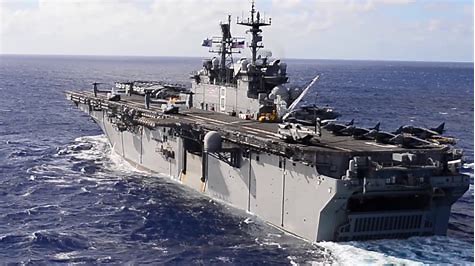I see more and more evidence of the world moving away from fossil fuels toward hybrid and electric propulsion solutions. I wrote about Volvo’s upcoming hybrid system back in October, but now there is even more evidence that the motivation is moving into reality faster than one may have imagined.
In the current Naval Institute’s Proceedings, there is an article documenting the Marine Corps’ move toward more efficient hybrid-electric vehicles. It seems that the heavier armor plating on the new tactical vehicles that replaced the Humvee, much needed to protect marines from IEDs, dropped fuel economy by 30 percent due to the extra weight. While these vehicles certainly save marines’ lives, they also puts other marines at risk with more frequent refueling operations in the field. And the scale is huge. In 2010, the daily consumption of fuel to support ground operations in Afghanistan exceeded 200,000 gallons, three quarters of which were for ground forces.
Significant fuel consumption becomes a big factor in ground force operations. When General James Mattis arrived in Baghdad back in 2003, he urged the Department of Defense to “unleash us from the tether of fuel.” In the years since then, tremendous advances in hybrid-electric vehicle (HEV) technology has brought the marines closer to making this happen. And while the initial investment to achieve this goal is stiff, the return on investment should be well worth it. The Navy has already proven this.
The USS Makin Island is the eighth of the Wasp-class amphibious assault ship program, commissioned in 2009. She is different from her sisterships in that she uses a hybrid propulsion system instead of traditional steam boilers and steam turbines. And her fuel consumption is about 50 percent (or less) than the other seven ships.
The ship uses gas turbines to drive the ship over 12 knots (top speed is 28 knots), as these turbines are only efficient near their maximum output. Below 12 knots, which is about 70-percent of the time, she is driven by two large AC electric motors, powered by six diesel generators, running at their highest level of efficiency.
In her maiden voyage from Mississippi to San Diego, the Makin Island saved $2.2 million in fuel costs. This 850-foot warship is expected to save taxpayers over $250 million during the course of her lifetime. This is a huge step forward by the Navy, in a world looking to eliminate dependence on fossil fuels.
What is particularly fascinating is the technique they came up with to maximize fuel efficiency under way, and it seems adaptable to future cruising powerboats. Called “Sprint and Drift,” the crew runs the boat at higher speed using the gas turbines to get into position well ahead of the plan of intended movement (PIM). (Don’t you just love the military and its acronyms!) Basically, think about making way towards a waypoint, traveling at faster than normal cruising speed, monitoring your actual position against where along the charted course you would be at your normal speed. When the ship is well ahead of this estimated “normal” position, the crew switches over to diesel-electric drive, and continues on until the ship is only a few hours short of their PIM, essentially drifting back at slower speed along the course. Then they repeat the cycle of leap frogging between higher gas turbine speed and slower, but highly efficient diesel-electric power.
By using this combined propulsion technique, the sailors saved more than 800,000 gallons of fuel in 2011.
All of this leaves me wondering when we will reach a tipping point where the recreational boating industry will have to make a major shift in its approach to marine propulsion. I have a hard time imagining a couple happily driving to the marina in their Tesla or other electric car (there are so many choices these days), only to then burn hundreds of gallons of fuel in a relaxed weekend of cruising. That is just hard for me to compute from 30,000 feet. If the bureaucracy and complexity of a major military service can move in a positive, environmentally-aware direction, surely we can too.
And when I look at the flipside of cruising boats, which are driven by wind and sails, I wonder if there is a solution somewhere in the middle that just needs a little coaxing to become a new alternative. Better sail handing systems, with more automated controls, efficient and easier-to-use management of propulsion systems that fit the needs and abilities of cruisers. I wonder.
The RV industry is all over this subject, making slimmer and more efficient vans for a younger audience that demands standard solar panels instead of gas generators, and more fuel-efficient chassis instead of large bus frames. Even some motor journalists now write about the day when driving a sleek, ultra-efficient electric car will prove more soulful satisfying that the wind-in-your-face experience of an open sports car with manual transmission and loud, smelly exhaust.
Something to consider and think about as the world’s transportation categories continue to move towards a greener world…while we stand still in our FOE. That’s military-speak for future operating environment.











